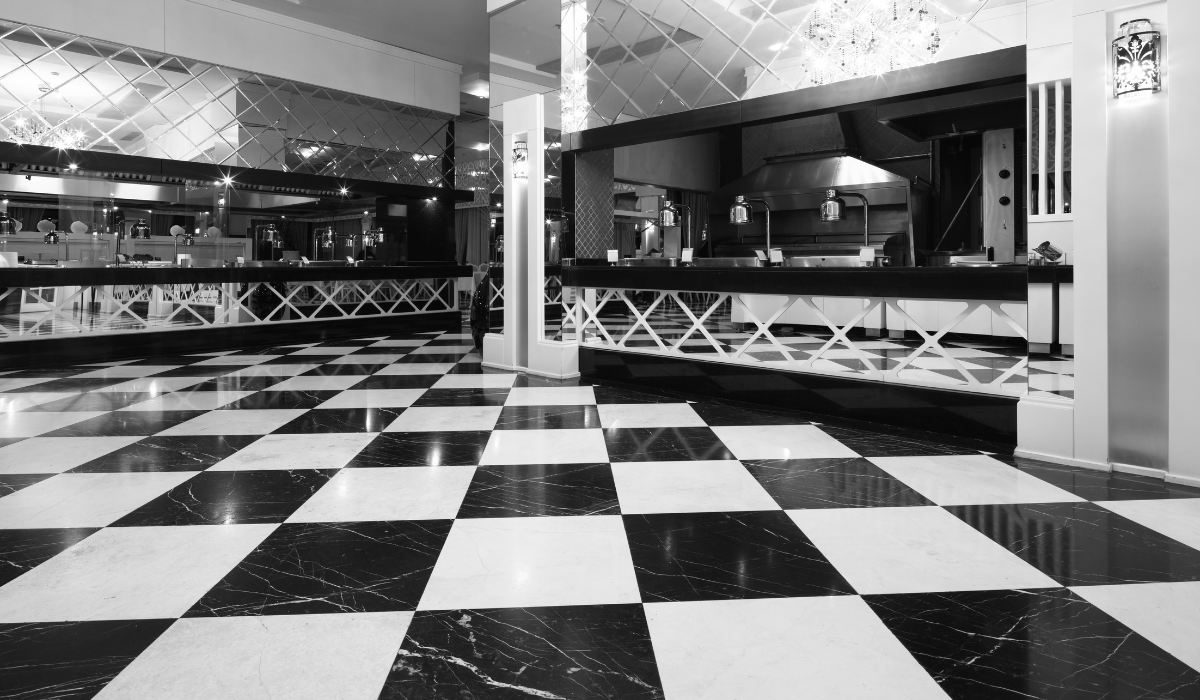Home Improvement
Why Do Homes in Asia Have Tile Floors? Exploring Tradition, Climate, and Practicality

When stepping into a home across Asia, whether in the bustling cities of India, the tropical islands of the Philippines, or the serene villages of Thailand, one feature stands out: the prevalence of tile flooring. From intricately patterned ceramics to sleek, modern porcelain, tiles dominate interior design choices. But why is this the case? The answer lies in a blend of climate adaptability, cultural heritage, affordability, and practical living. Let’s dive into the reasons behind Asia’s love affair with tile floors.
1. Climate Compatibility: Beating the Heat and Humidity
Asia’s diverse climates, particularly in tropical and subtropical regions, play a pivotal role in flooring choices. Countries like Indonesia, Malaysia, and Vietnam endure hot, humid weather year-round. Tile flooring, especially ceramic or stone tiles, naturally stay cool underfoot due to its high thermal conductivity. Unlike wood or carpet, which trap heat, tiles dissipate it, offering a refreshing respite from scorching temperatures.
Moreover, tiles resist moisture buildup, making them a lifesaver during monsoon seasons. Humid climates foster mold and mildew, but tile floors remain unaffected, making them ideal for regions where humidity levels routinely exceed 70%. In contrast, materials like hardwood warp, while carpets become breeding grounds for allergens.
2. Durability for the Long Haul
Asian households often prioritize multi-generational living, requiring flooring that withstands decades of use. Tile floors are durable, resisting scratches, dents, and fading even under heavy foot traffic. This resilience is especially valuable in homes with children, elders, and frequent gatherings.
In agrarian communities, tiles also handle outdoor elements. Terracotta tiles, for instance, are standard in rural India and Southeast Asia due to their ruggedness and natural insulation properties.
3. Affordability and Accessibility
Cost-effectiveness drives tile popularity. In many Asian countries, locally sourced materials like clay and ceramic keep production costs low. For example, Vietnam’s ceramic tile industry thrives on abundant raw materials, making tiles cheaper than imported hardwood or luxury vinyl.
Labor costs for installation are also lower, as tiling is a widespread skill. This accessibility ensures even budget-conscious homeowners enjoy stylish, functional floors.
4. Cultural Roots and Aesthetic Versatility
Tiles are deeply embedded in Asia’s architectural heritage. China’s iconic blue-and-white porcelain tiles reflect centuries of craftsmanship, while Spain-influenced baldosa tiles adorn Philippine ancestral homes. In India, ornate jaali patterns or vibrant Rajasthan-inspired motifs add cultural flair.
Tiles also align with Feng Shui principles, promoting harmony through neutral, easy-to-clean surfaces. Their versatility allows seamless transitions from traditional to modern aesthetics, such as glossy subway tiles in urban Tokyo apartments or rustic stone-look tiles in Balinese villas.
5. Low Maintenance and Hygiene
Practicality reigns in busy households. Spills, stains, and dust are effortlessly wiped from tile surfaces, a boon in pollution-prone cities. Unlike carpets that trap allergens, tiles improve indoor air quality, a priority for health-conscious families.
During festivals like Diwali or Lunar New Year, when thorough cleaning is customary, tiles simplify the process. Their non-porous nature also deters pests like termites, a common menace in wooden floors.
6. Water Resistance: Surviving Monsoons and Floods
Tile floors are a practical defense in flood-prone areas like Bangladesh or coastal Thailand. Unlike laminate or engineered wood, they withstand water damage and dry quickly. Even daily, tiles excel in wet areas like bathrooms and kitchens, often extending seamlessly into living spaces.
7. Modern Innovations and Sustainability
Today, tiles have evolved with eco-friendly trends. Recycled materials and energy-efficient production methods cater to environmentally aware buyers. Large-format porcelain slabs mimic marble or wood, appealing to urban designers seeking luxury without compromising practicality.
Conclusion: A Timeless Choice for Asian Living
Tile floors in Asia are more than a design preference. They’re a harmonious response to environmental, economic, and cultural needs. From enduring monsoon rains to preserving centuries-old artistry, tiles embody resilience and adaptability. As lifestyles modernize, this timeless flooring continues to evolve, ensuring its place in Asian homes for generations.
Whether you’re renovating or simply curious, understanding the “why” behind tile floors offers a glimpse into the heart of Asian living, where tradition and practicality walk hand in hand on cool, unyielding surfaces.
FAQs about why do homes in Asia have tile floors
Q1: Why are tile floors so popular in Asian homes?
Tile floors are favored in many Asian countries because they are durable, easy to clean, and highly resistant to the challenges posed by humid and rainy climates.
Q2: How do tile floors benefit homes in humid climates?
In regions with high humidity and frequent rainfall, tile floors are ideal since they do not absorb moisture like carpet or wood. This helps prevent mold and mildew growth while simplifying maintenance.
Q3: Do tile floors help keep homes cooler in hot climates?
Yes, tile floors naturally stay cooler than many other flooring options. This cooling effect is particularly beneficial in tropical and subtropical areas, contributing to a more comfortable indoor environment without excessive use of air conditioning.
Q4: Are there cultural or aesthetic reasons for the prevalence of tile floors in Asia?
Absolutely. Many Asian cultures appreciate the traditional and artistic designs often found in tile flooring. Intricate patterns and locally inspired motifs are common, making tiles both a practical choice and a reflection of regional heritage.
Q5: Is cost a factor in choosing tile floors in Asian homes?
Often, yes. In many Asian markets, tile materials and skilled labor are widely available and relatively affordable. This makes tile flooring a cost-effective solution for both new construction and renovations, balancing both budget and functionality.
